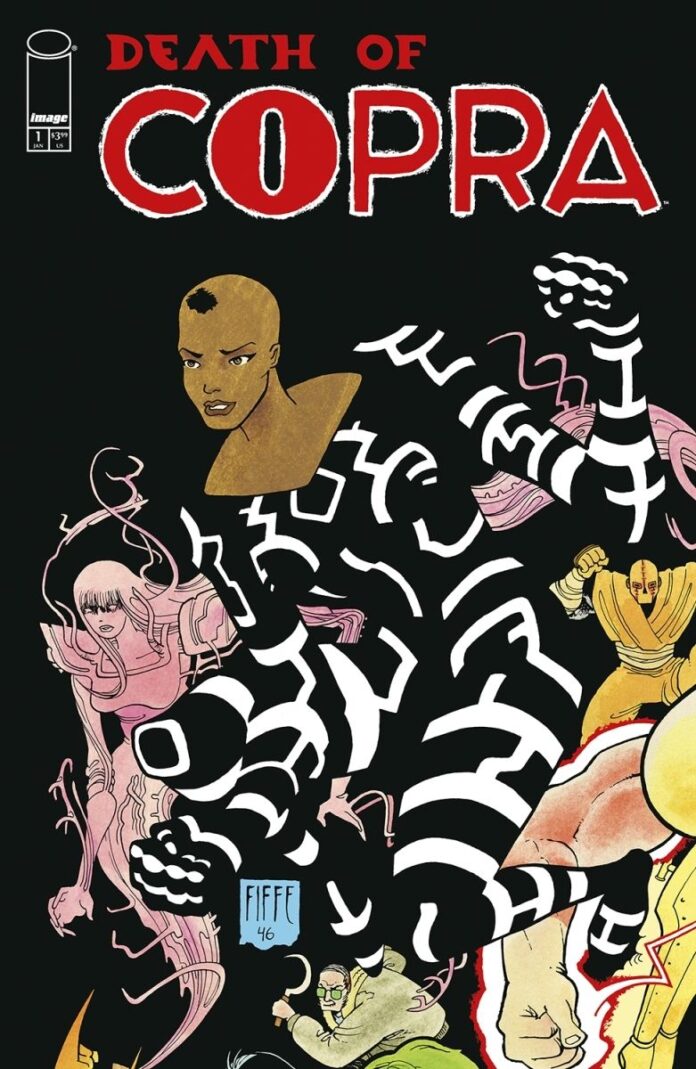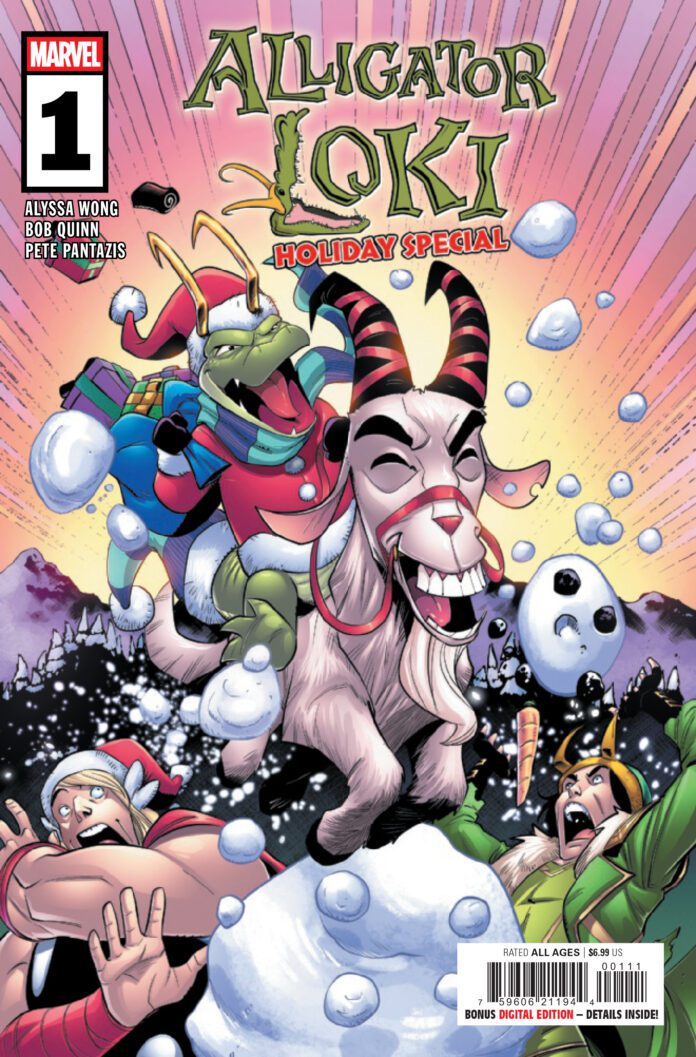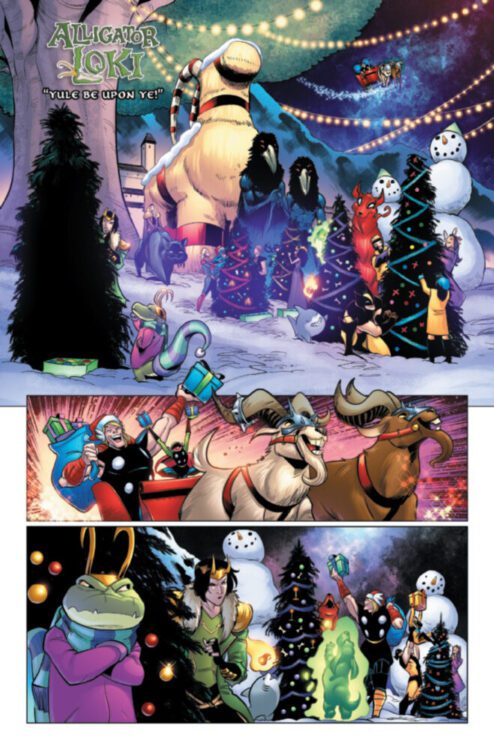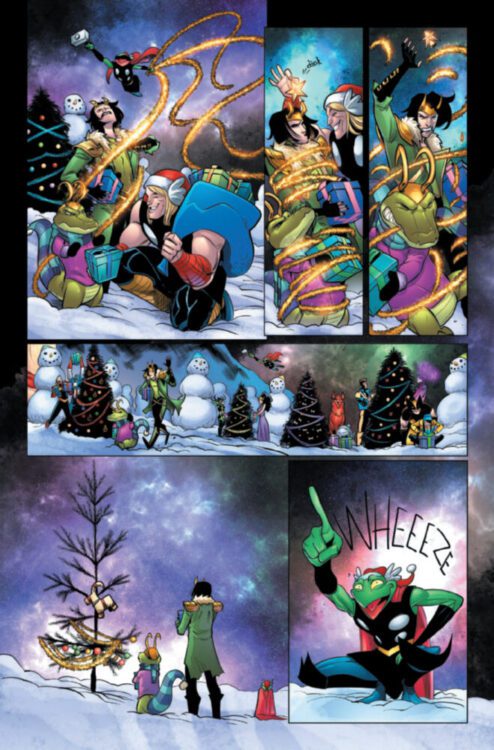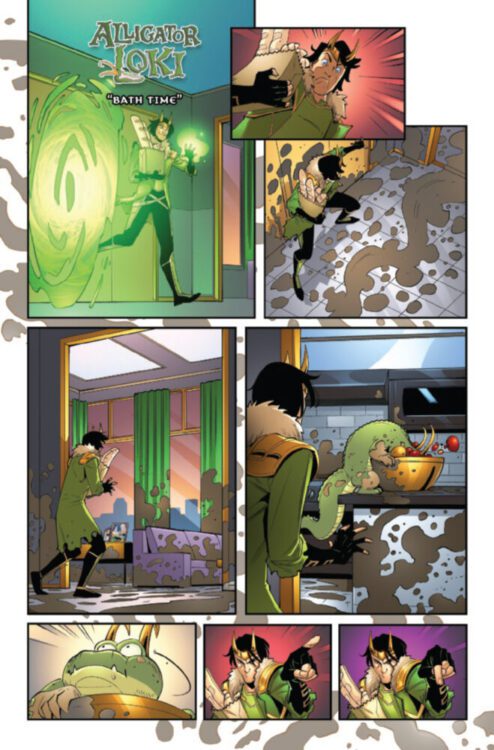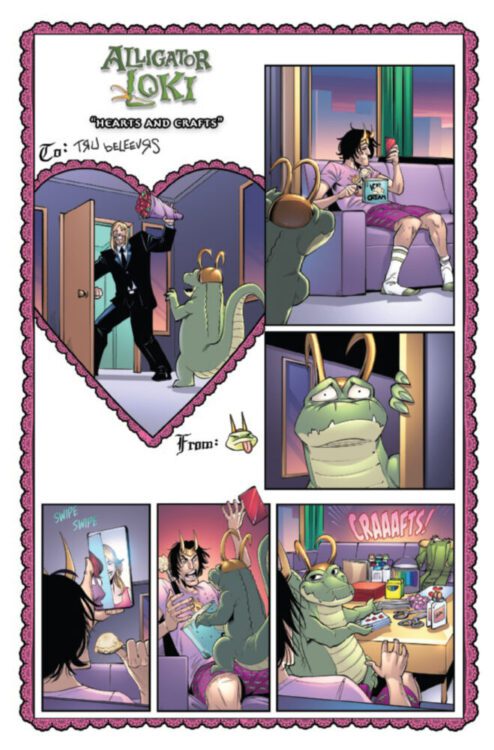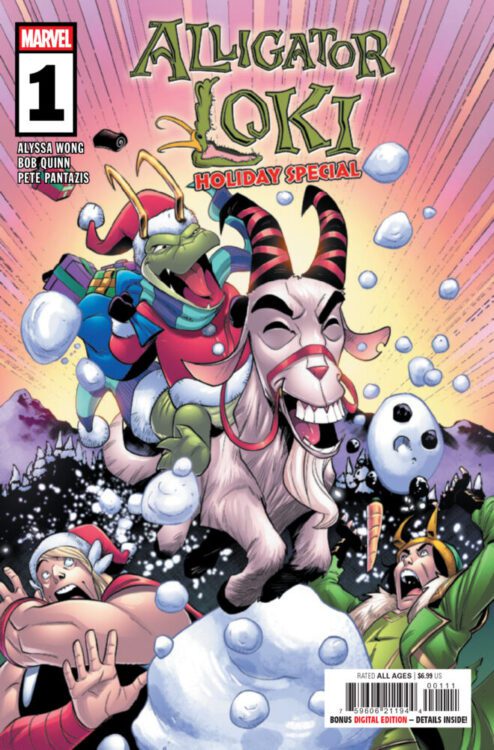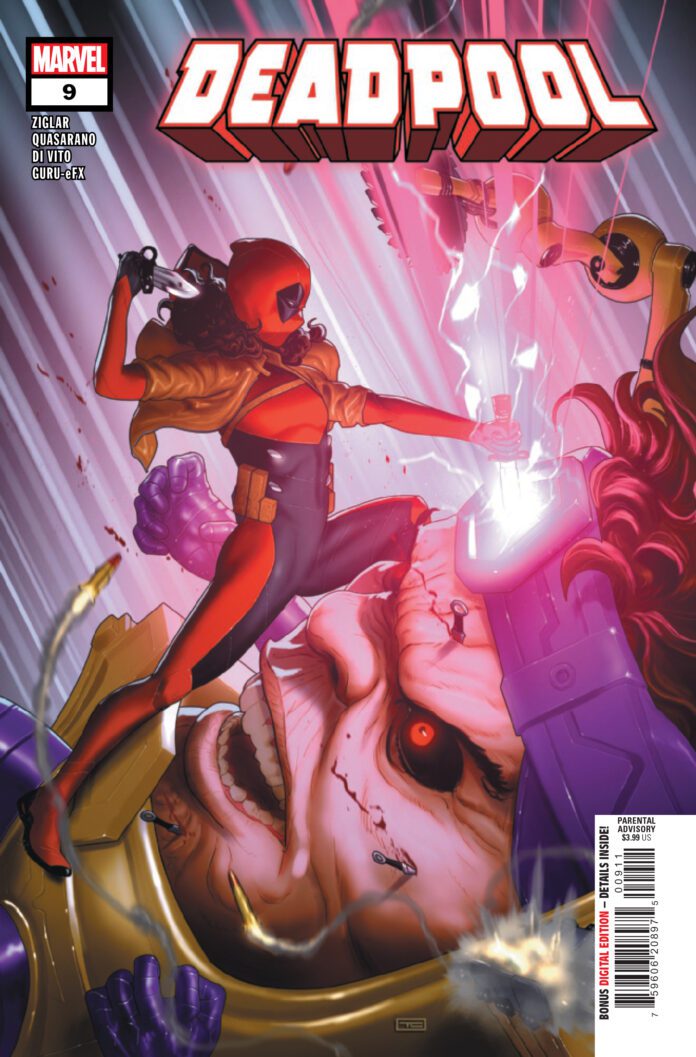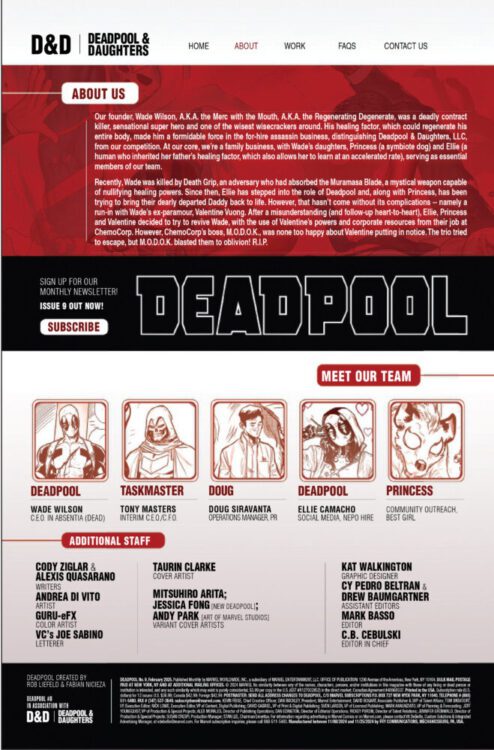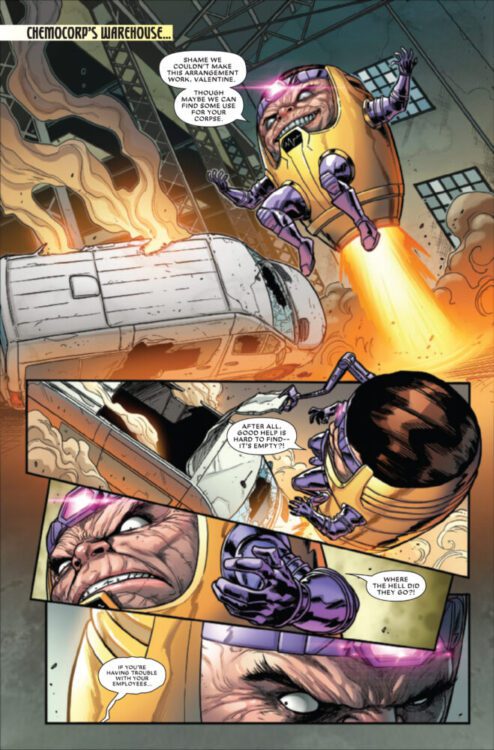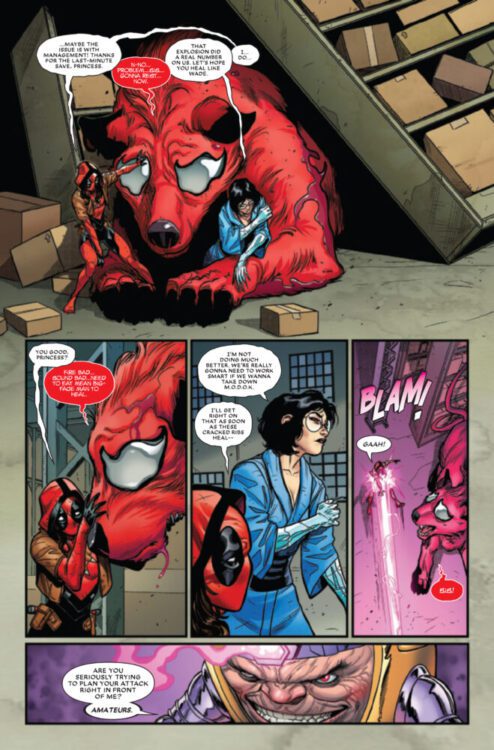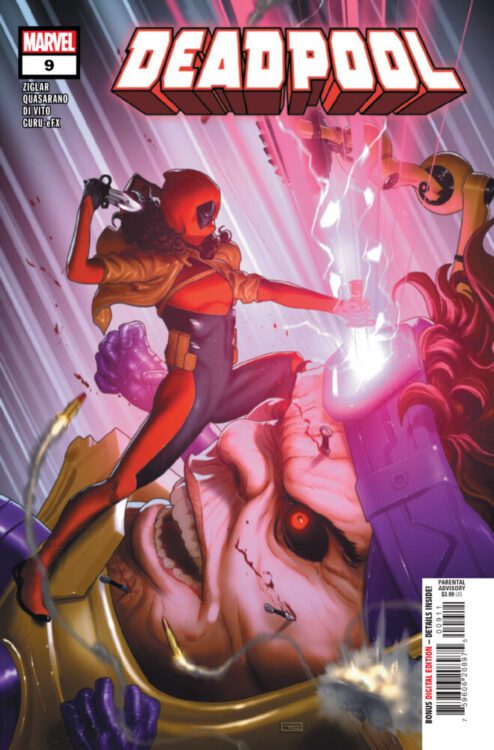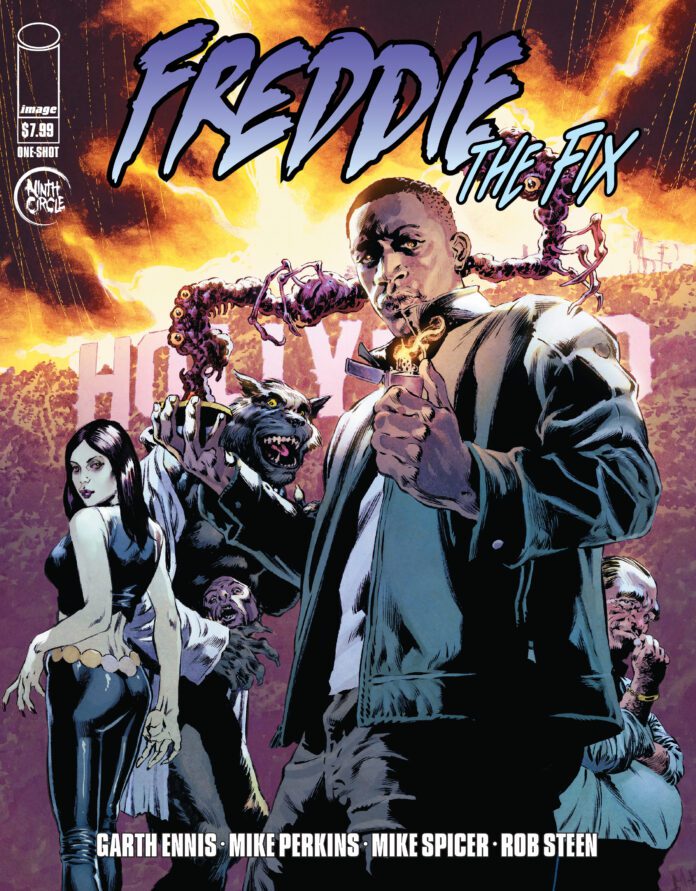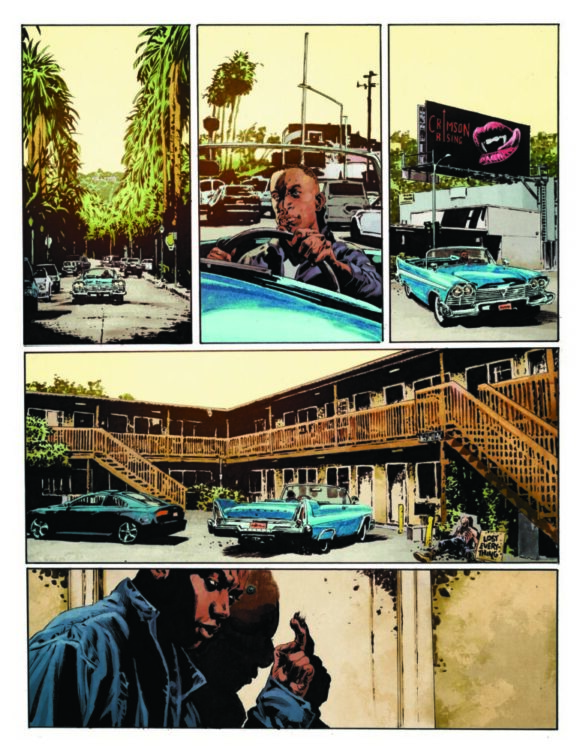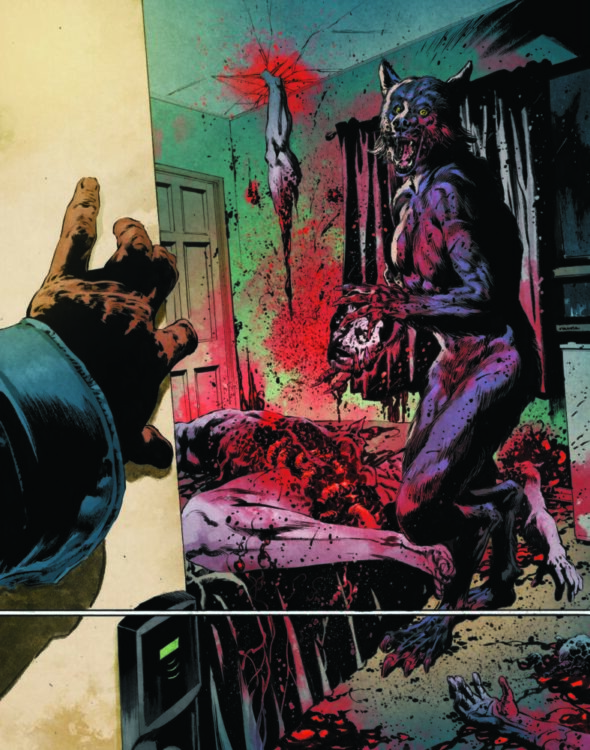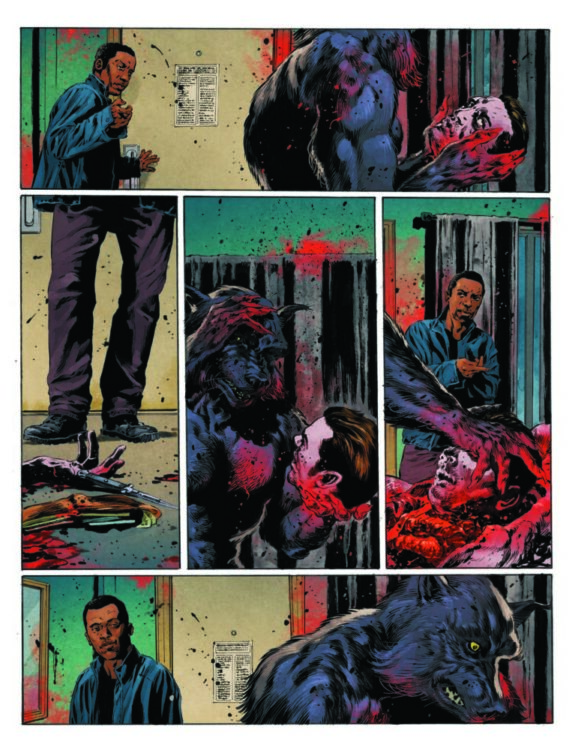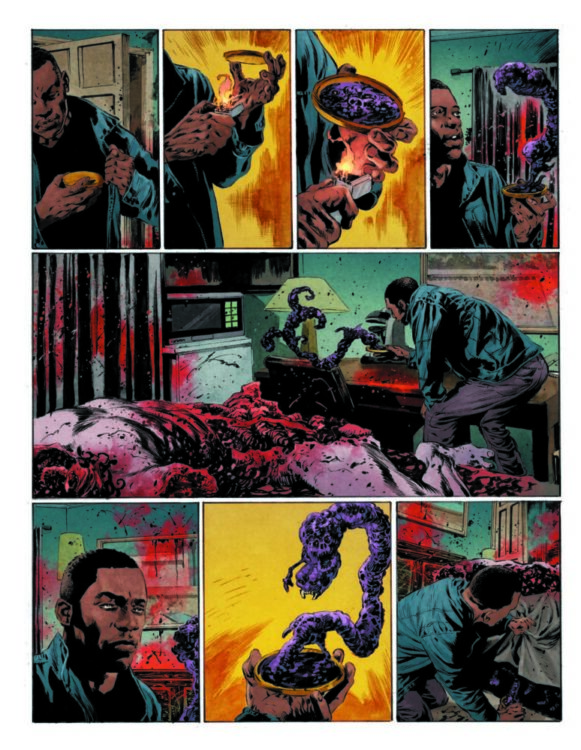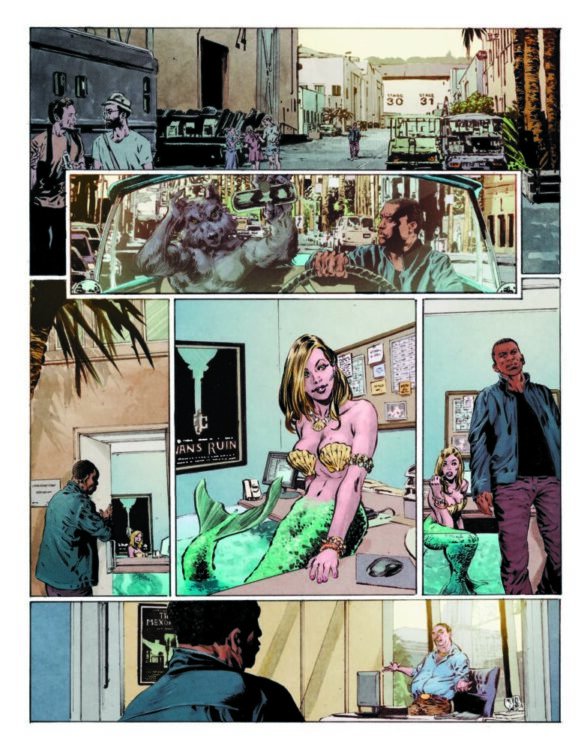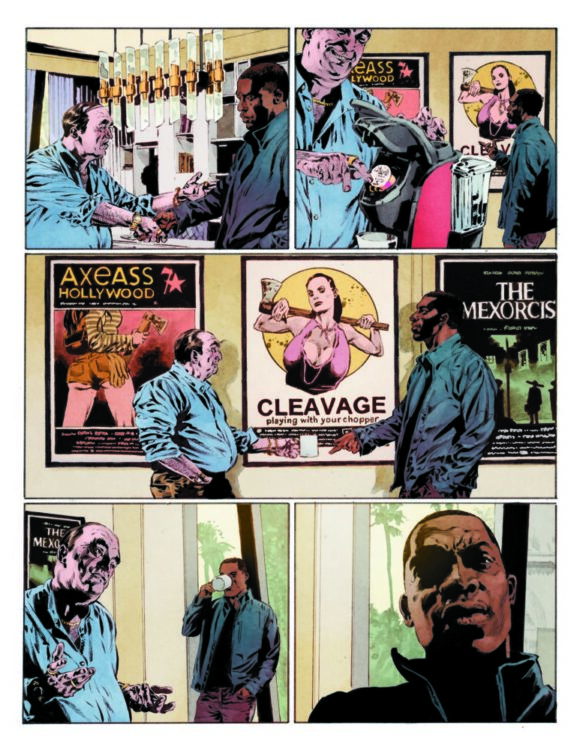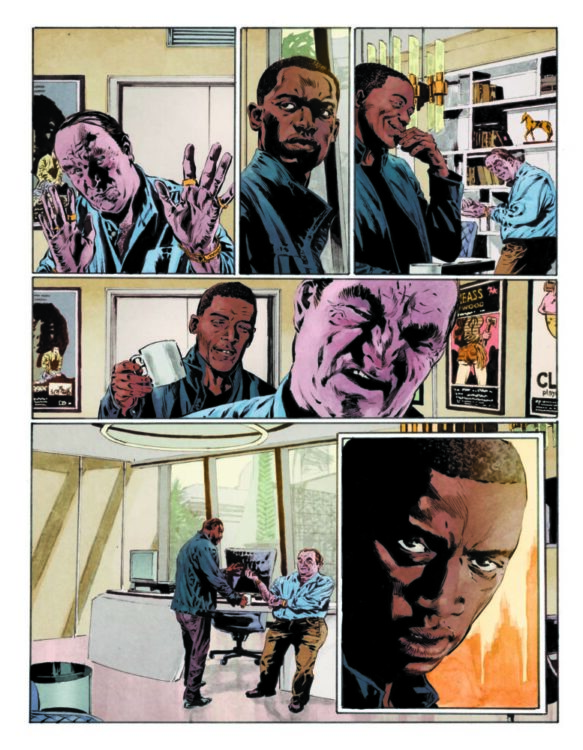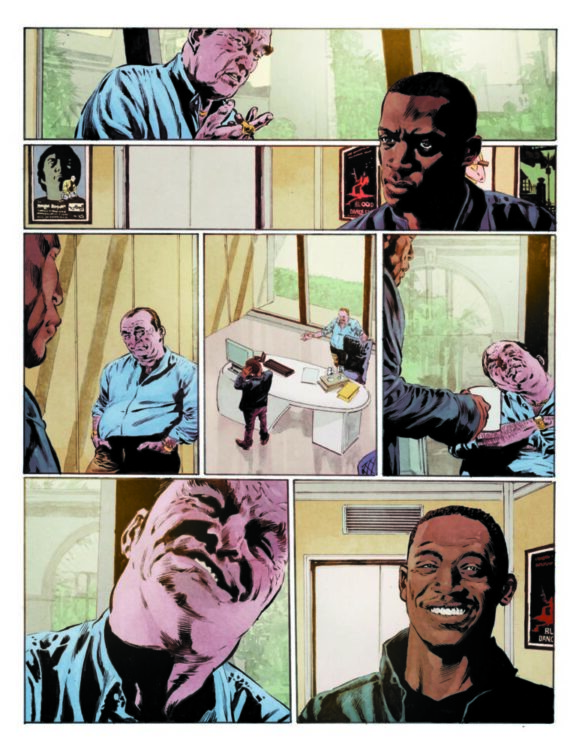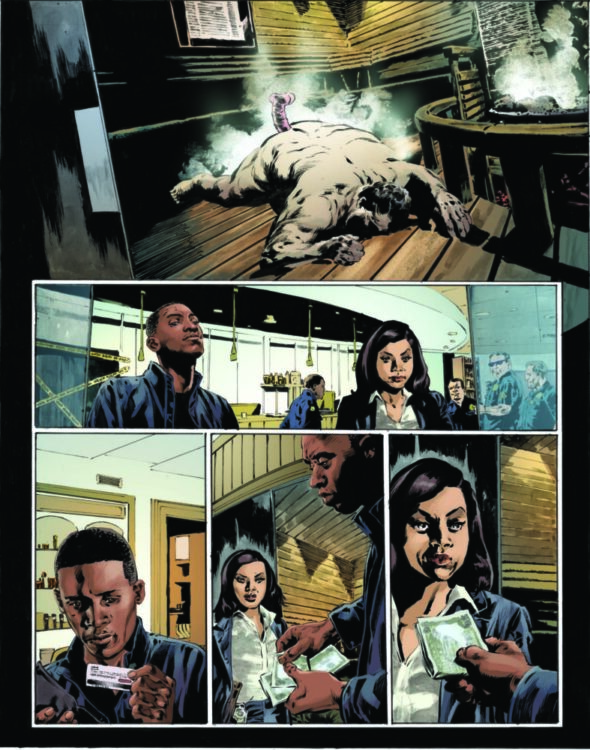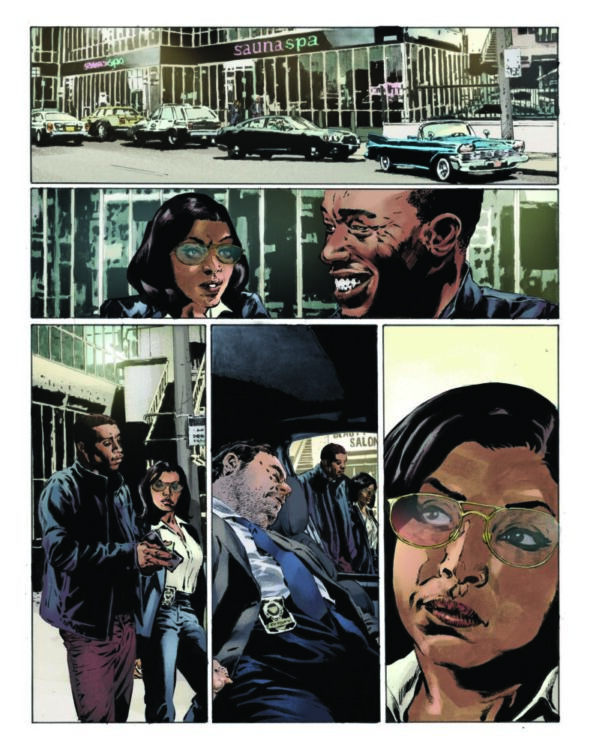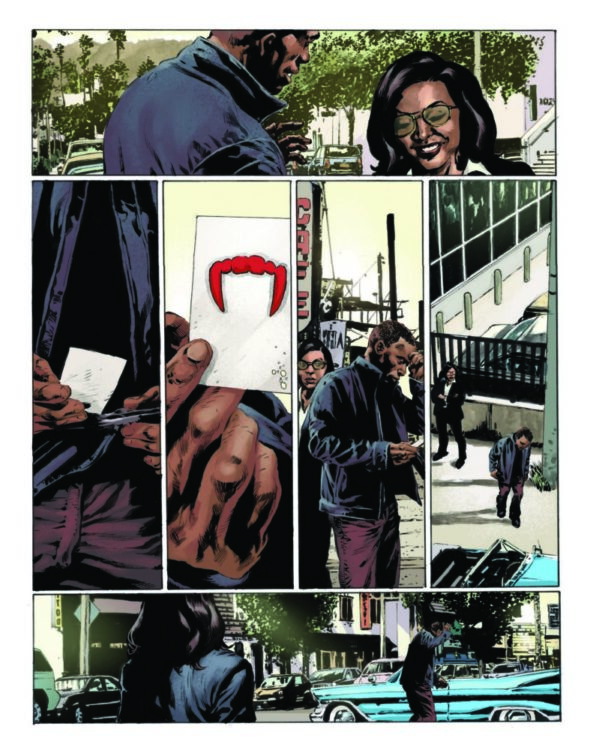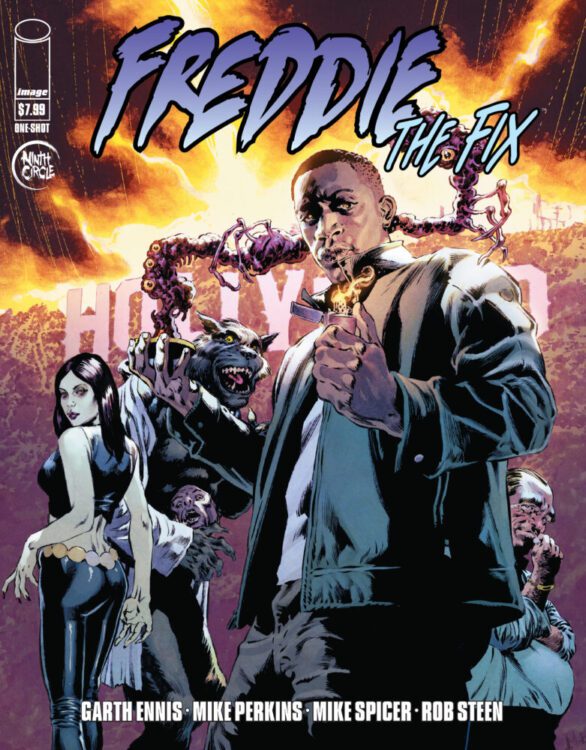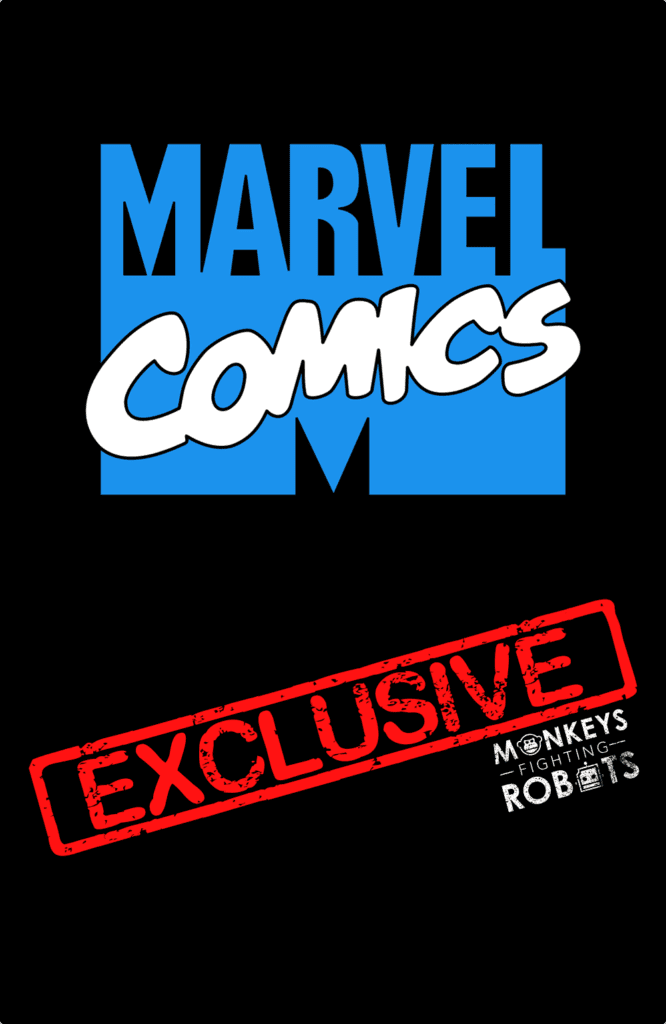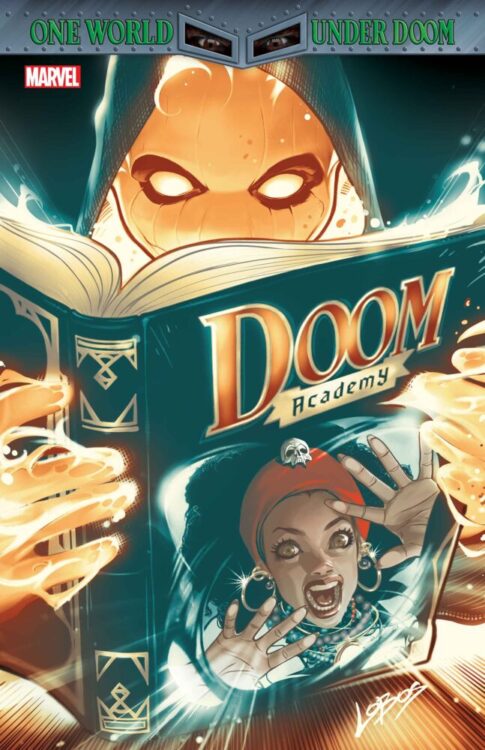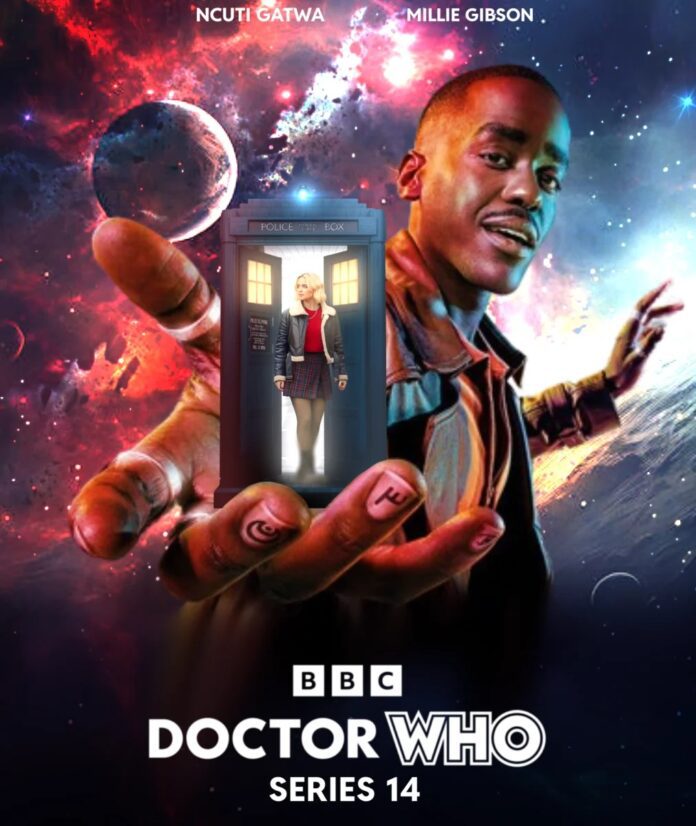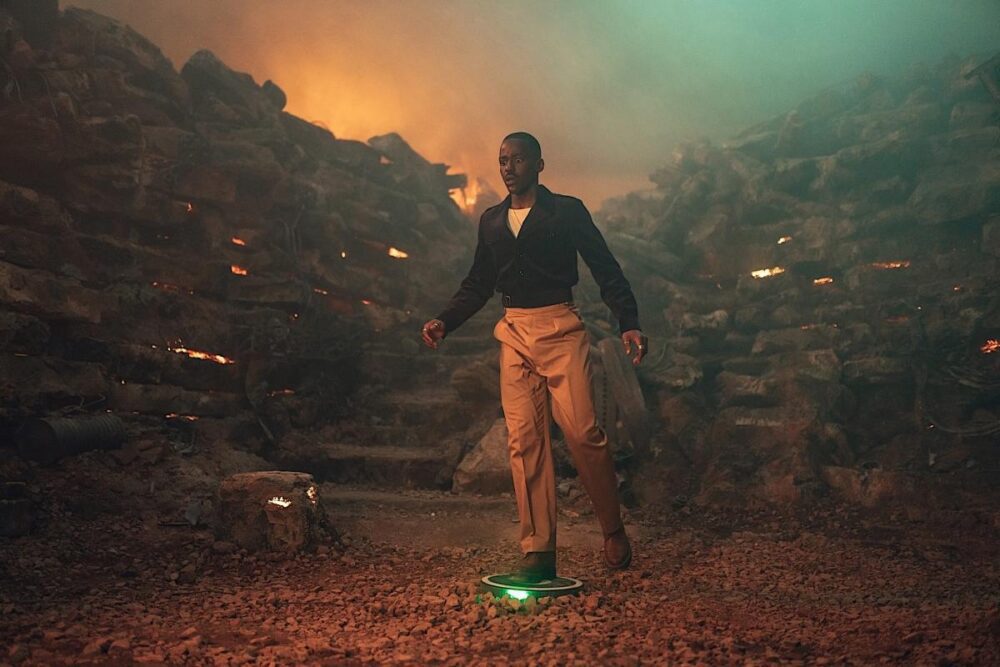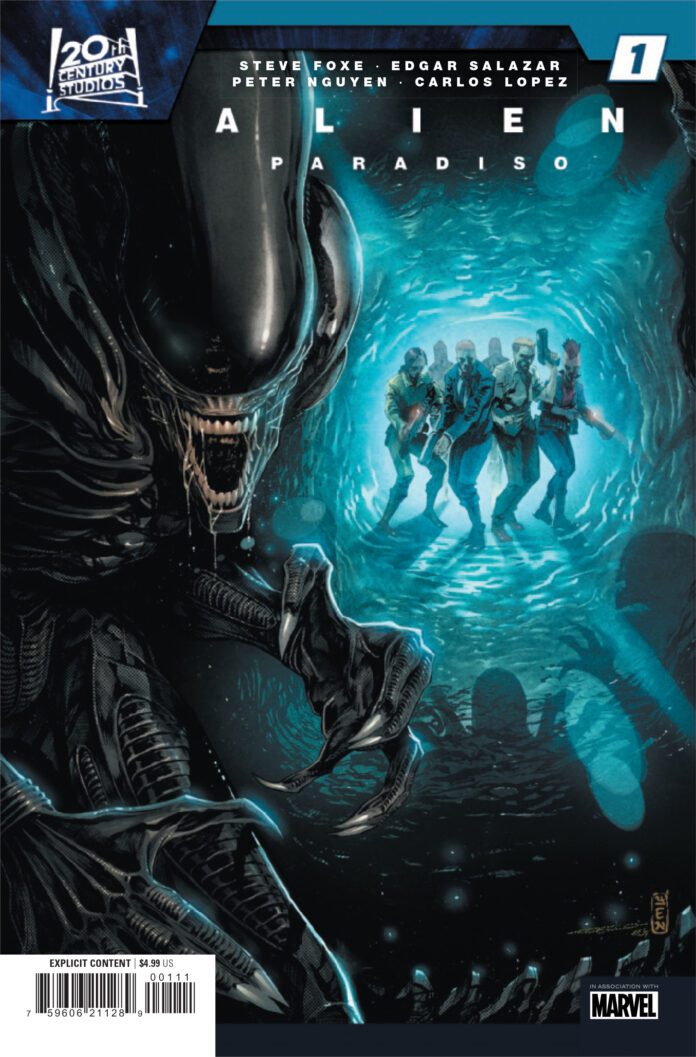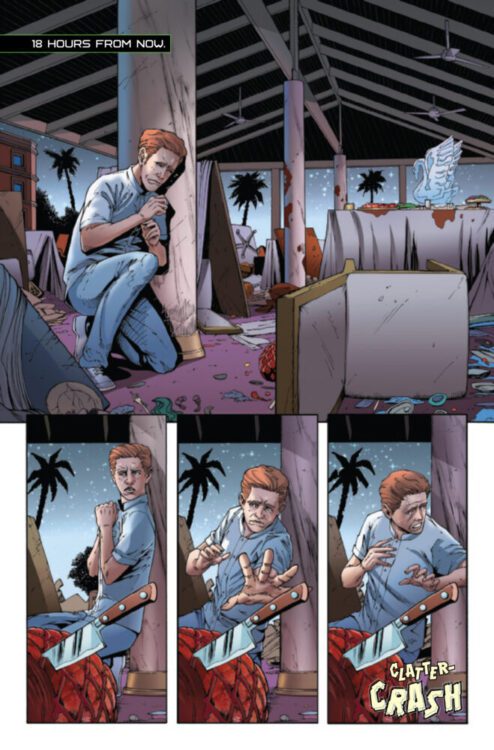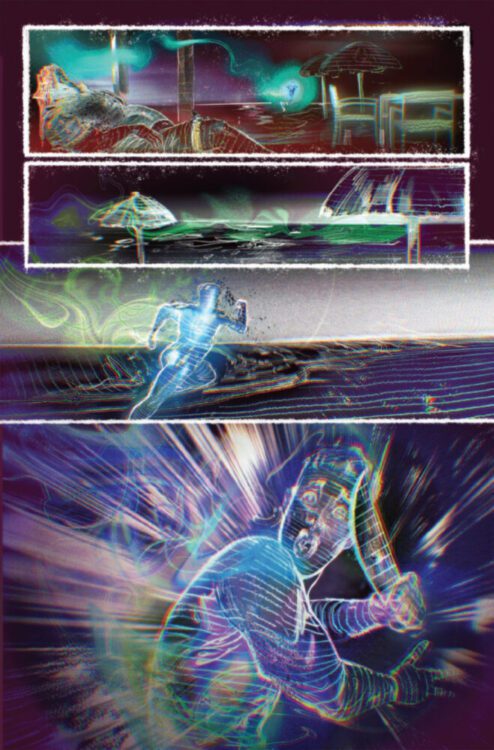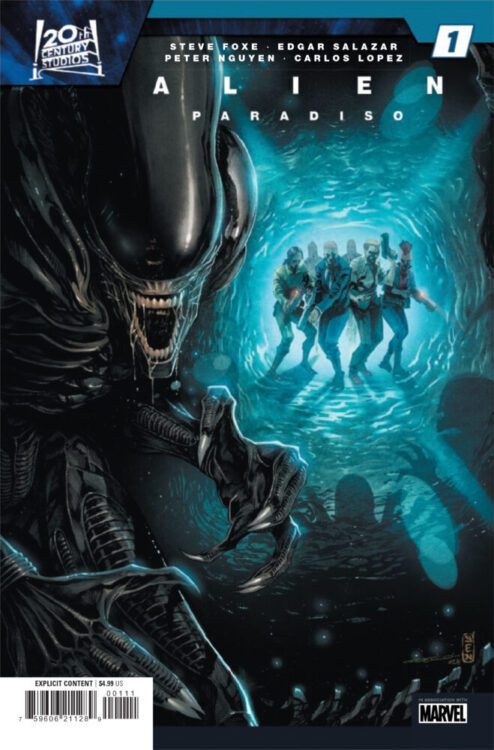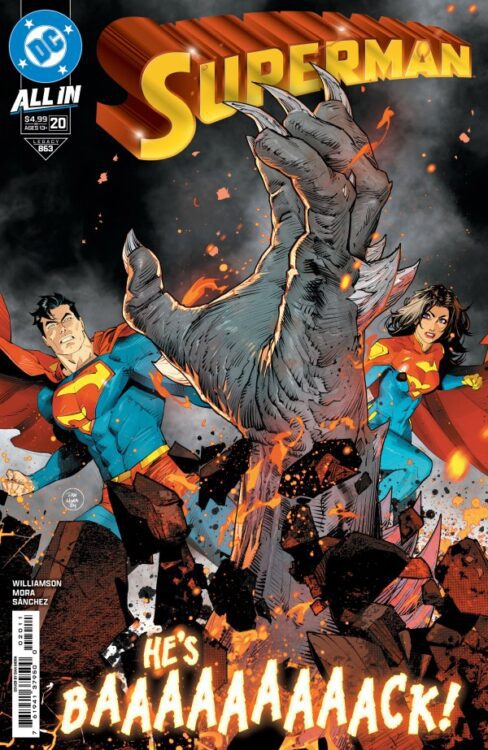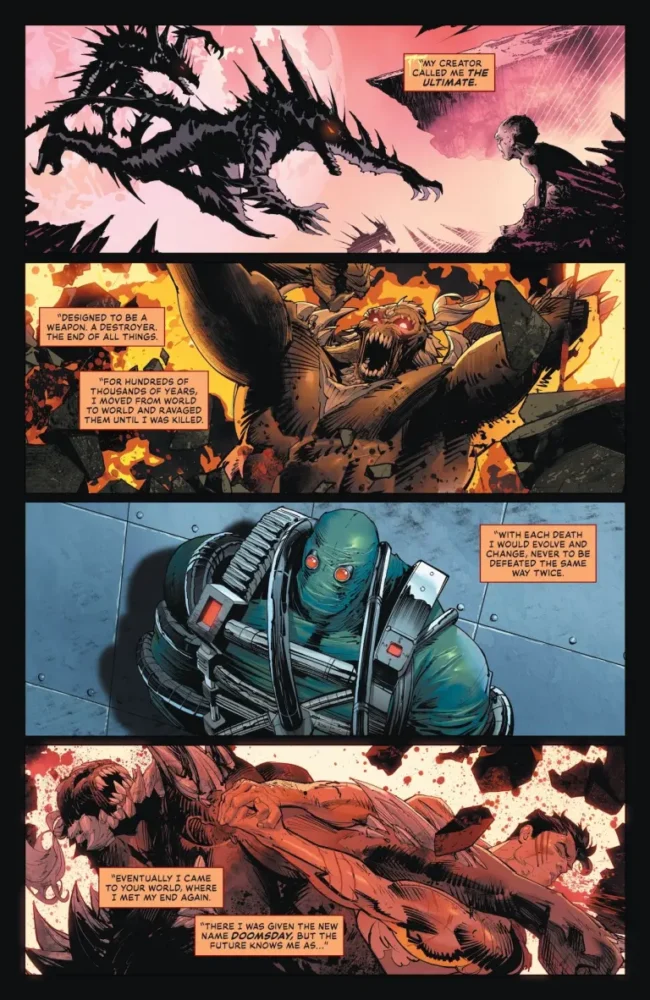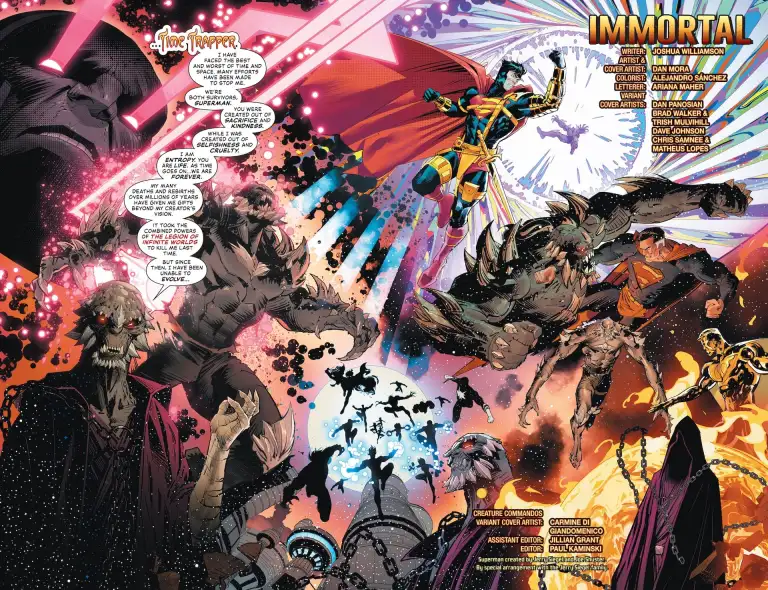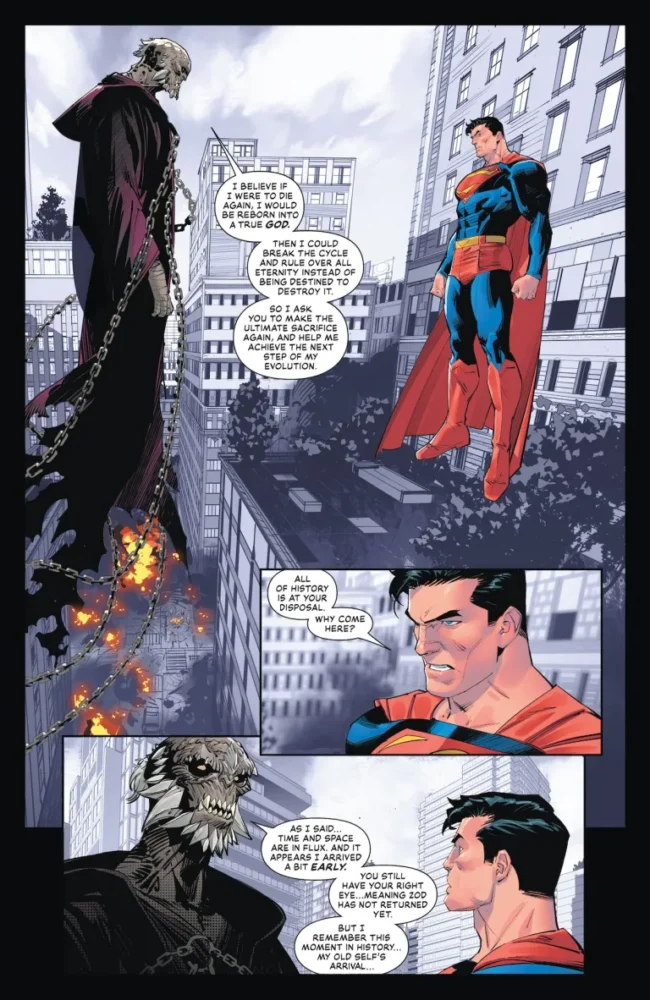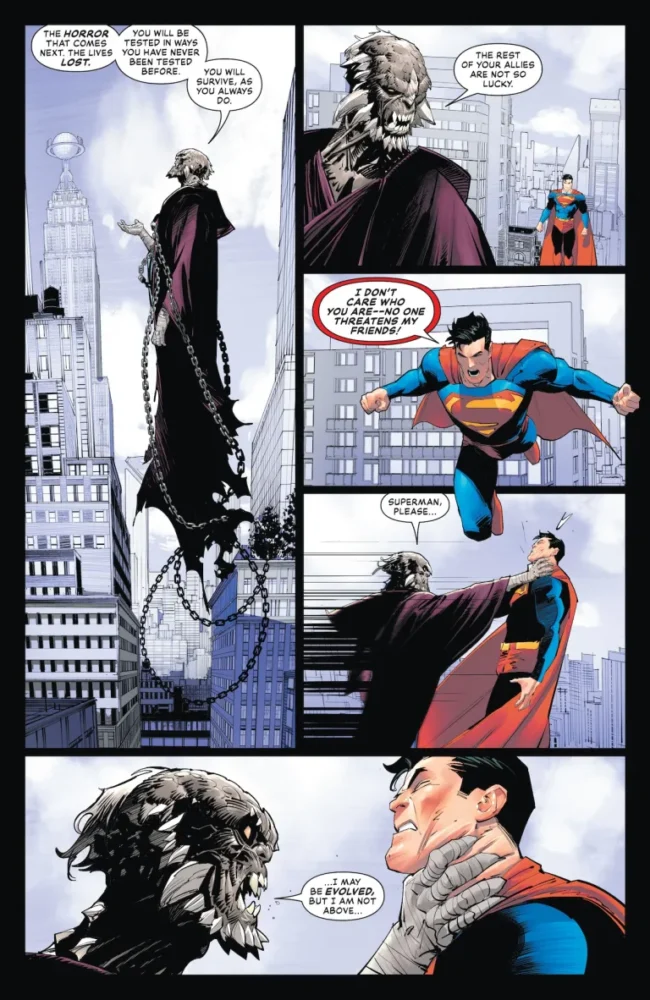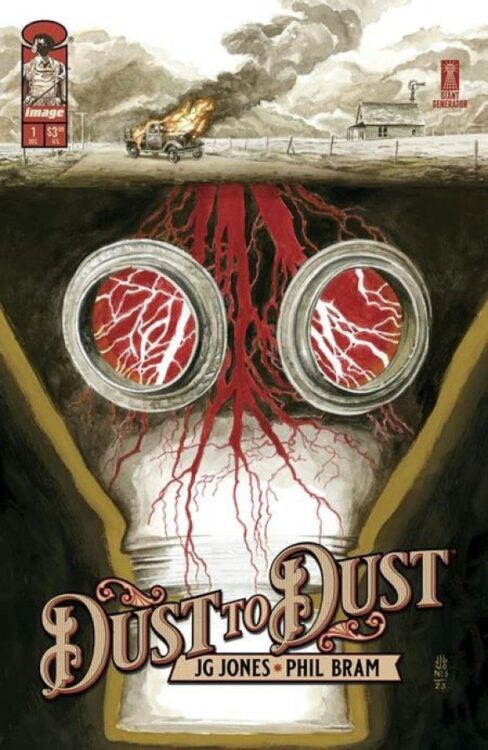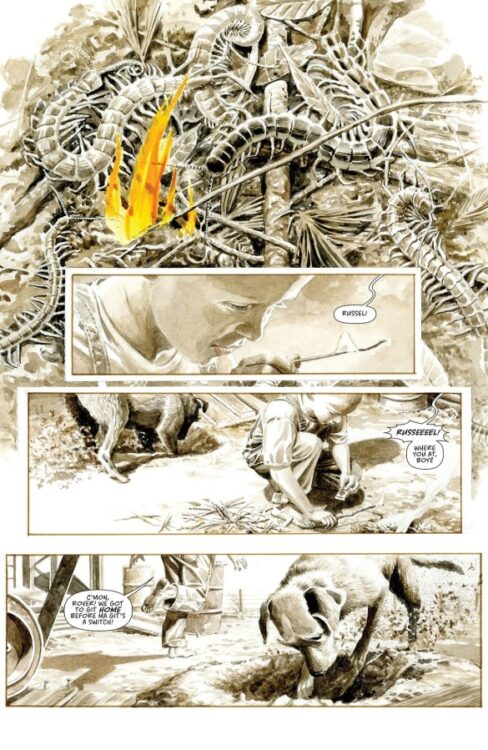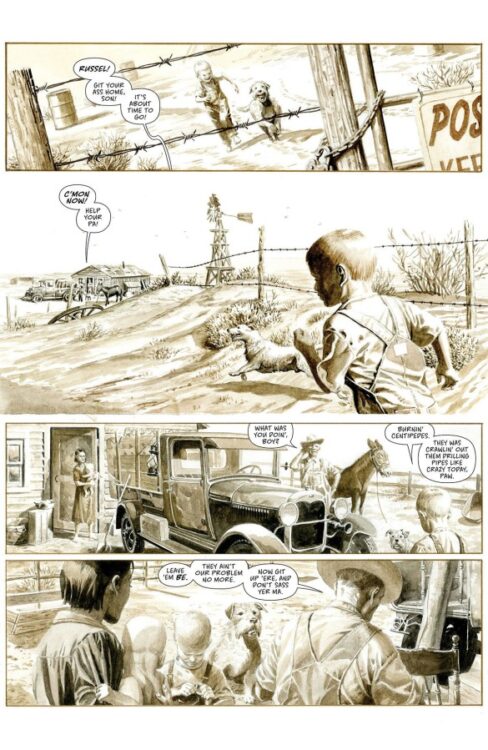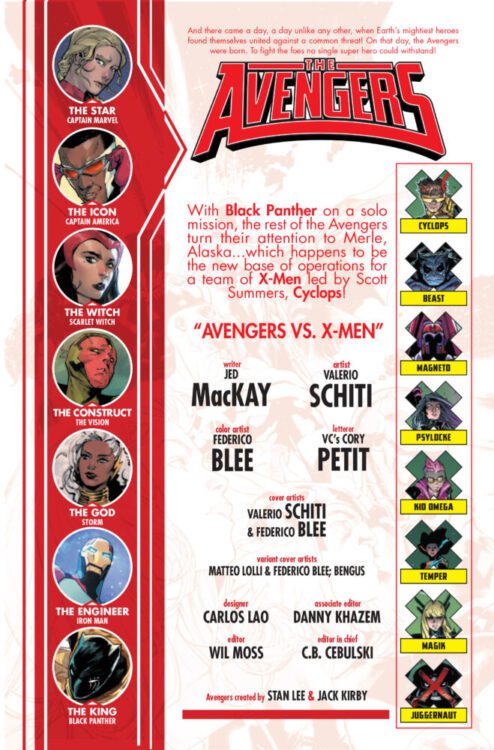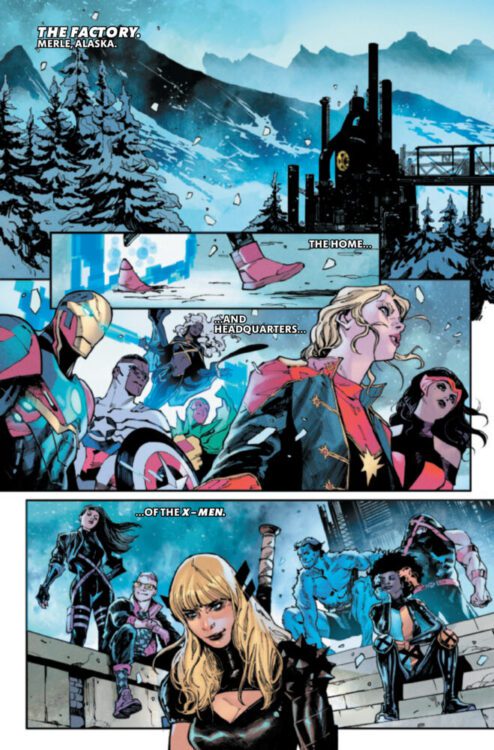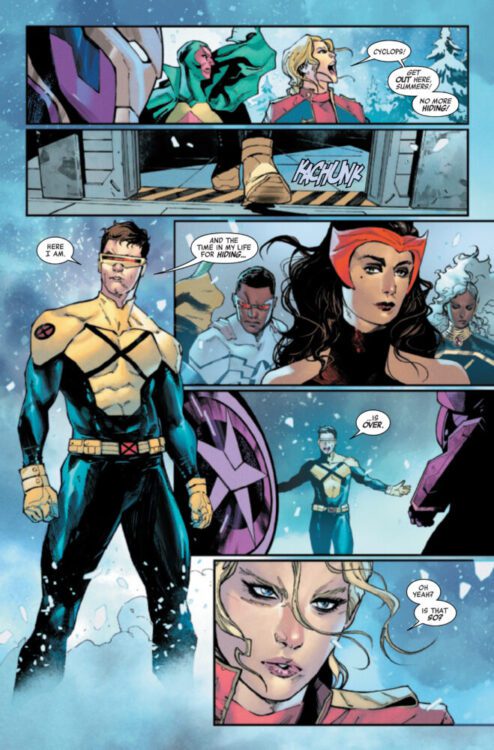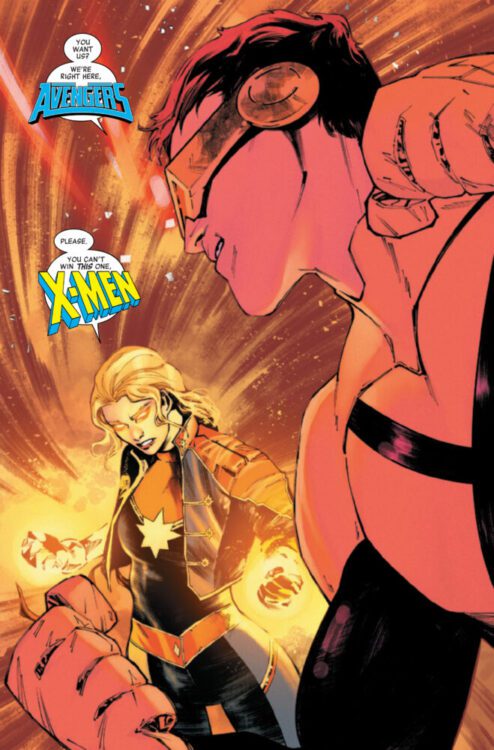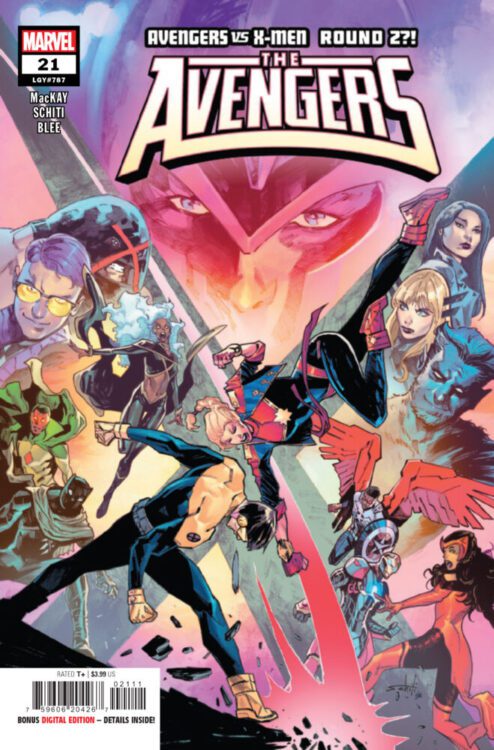Michel Fiffe has been bringing readers intense superhero action for years with COPRA, his raw look at superpowered mercenaries, and the violent, body-count-filled missions they take on. Now Fiffe is getting ready to put the book and its characters in the grave! So read on as Fiffe gets into the nit and grit of creating what is sure to be a blood-soaked and explosive end to one of indie comics’ best series.
Monkeys Fighting Robots: Michel, Copra has been in your life a long time. You’ve been writing about these characters for many years, and we have Death of Copra! Can you give us a brief (non-spoiler) synopsis of what the setup is?
Michel Fiffe: There’s a rumor I heard that the majority of Monkeys Fighting Robots fans are hardcore slabbers. They’re just gonna throw my comic into a graded piece of plastic, they’re not even gonna read the damn comic. Is this true? Just in case that’s false, picture this: a diverse group of deadly weirdos who, after working together this long, have developed some nasty workplace friction. That includes competition and sex and grudges, retribution for past genocide and institutional collapse. From scrappy to co-opted, every member of COPRA will have their moment of reckoning.
MFR: Was there always a definitive number of issues or arcs you had in mind?
Fiffe: The previous arc, “The Ochizon Saga” [COPRA Round Six], had a few issues where the world was turned upside down. That was originally supposed to be like twelve issues or more. It was supposed to be my “Inferno” event, just a new demented status quo. I quickly lost interest when I started actually plotting the issues. I got impatient with that idea, it bothered me, it felt like padding. I would’ve made it fun, but it would’ve been a lot of work for empty calories. So I go to the point, wrapped up that huge story, and excitedly prepped for this final arc. In fact, I was supposed to introduce a few new elements during that unabridged version of the Ochizon Saga, but they were held back for this final arc. There’s been a lot of moving around, a lot of organic shuffling that simply made for a better story.
MFR: Did you always have the narrative ending clear in your head? Did all the characters have a ‘fate’ you were building to, or did things change or develop as you wrote them? I mean, a title like Death of Copra is pretty direct!
Fiffe: I’m beyond fortunate to have an ending for a project of this scope and to execute it on my terms. That doesn’t happen often in these circles. The book is either cancelled, or you run out of steam or you just stop and focus on the next opportunity. But yeah, I’ve had a clear idea as to how I wanted things to wrap up for a while now.
MFR: Did you approach writing Death of Copra any differently than previous arcs?
Fiffe: I just recently heard Gilbert Hernandez bemoan his approach on Poison River, saying he would make it much easier to follow. I took my cue from Poison River! It’s a layered, sprawling, ambitious masterpiece that I have always loved. I saw it as a sort of creative goal worth pursuing in the abstract. Same thing with the Legion’s “Five Years Later” story. Didn’t like it at first, it was too confusing and jumbled, but something about it made me want to crack the code. The more I would revisit it, the more I liked it. Now I unequivocally love it. It’s ironic that 5YL is an influence since clarity has been an ongoing concern for me, especially during this last stretch.
MFR: What’s the best thing you learned about publishing Copra so independently? What was the most rewarding? What was the hardest part?
Fiffe: Being in a band actually taught me the value of being independent. There was a moment when I had to make the choice between pursuing music or comics as a career. I thought I could do both! And I loved being in a band, I enjoyed the teamwork of it all. My self-taught chops are comparable across both mediums, so I thought I had a shot in equal measure. But the band imploded, everyone went their own way, and I hated that I couldn’t control that outcome. That made me double down on comics, a thing I could have all to my own. I could be in charge of going the distance. I embraced that attitude even more when I started self-publishing. Because here’s the thing, I tried doing everything by the book, but what I discovered was that I’m not good at waiting for permission. So that thing I wanted? I made it myself. I nurtured it, shaped it, and seeing it develop and build on itself has been one of life’s great pleasures. The most difficult part can be the isolation, though. Which, you know, that sounds like a feature to me! But the reality is that it can do more harm than good. It gives you all the space in the world to be hyper-critical. You get into your head a little too much, which can warp your work.
MFR: I feel like Copra changed a lot of what action and superhero narratives can do for readers in comics. But how did Copra change you as a creator?
Fiffe: That’s interesting, I never thought about it changing the reader’s point of view. I mean, I think my story is pretty direct. There are no jarring or fanciful tricks… it’s simply a lot. It’s a large cast and that might be difficult for some people to follow. I can’t fault them for losing track. However, I do go out of my way to reward attention, because I really love it when I experience that as a reader. So that’s shaped me as a creator to a certain degree, really focusing on what I like in a comics reading experience. But that’s tricky, it’s thin ice, because what I want out of comics might not be what the audience wants out of comics. And this isn’t about me not myself to fit a mold, it’s about being more than myself. It’s a strange dynamic that fascinates me. I respect populist sensibilities. It’s a constant challenge for me, it doesn’t come naturally. Pop isn’t some easy turn of a switch, it’s a skill, a talent. It’s a mystery to me. I don’t think Paul McCartney gets the credit he deserves.
MFR: What’s it like emotionally coming to an end with characters you not only wrote for many years but that you created as well?
Fiffe: We don’t talk about emotions in this family, Manny, c’mon, you know this!
MFR: Looking back, do you think you have a favorite Copra cast member? Was there one that was harder to say goodbye to than any others?
Fiffe: Saying goodbye to the first major fatality was the most difficult. Not to spoil the first arc, but once I crossed that line, I knew nobody was safe. That was a necessary precedent to set in this type of comic book story, and I’ve kept my word. I haven’t cheapened loss or grief. 
MFR: What brought you to the decision to return to Image for Death of Copra?
Fiffe: Out of sight, out of mind. I wasn’t seeing COPRA in comic shops while traveling the country, simple as that. Look, don’t get me wrong, I’ve been lucky to have lasted this long with one story, and these last few years have been my most lucrative years as a self-publisher. But in the wider world of comics retail, let alone bookstores, my footprint was disappearing. So while the actual story of COPRA wasn’t gonna be compromised, I wanted to tackle things differently. I embraced the idea of certain things that I neglected before. You know, solicit it as a mini-series, have variant covers, have different artists DO those variant covers. Fun, harmless stuff that won’t affect the comic itself, but it might affect its reach, and thus its presence in the Direct Market. Now, as I laid out in my Creating COPRA DIY book, there aren’t many differences between self-publishing and Image Comics. You still have to produce the product yourself, but you better do it on time. The arena is bigger and it has its own rules, but you’re still in charge of promotion. So it’s risky no matter what you do. I would’ve regretted not doing it this way.
MFR: What can readers expect in the series?
Fiffe: Experience what comics of this stripe rarely get: an ending. Plus, I ink and letter and color by hand, therefore it’ll look like nothing else on the stands. Y’know, I just realized that the benefit of having collaborators is that you can all safely puff each other up on social media — “Oh, man, the artist who drew my script is a friggin’ genius, I can’t wait to show you all of the blah blah blah” — whereas single creators will at best sound like overconfident lunatic narcissists. I’m okay with that. Look, the writing in COPRA is top notch and the art is fantastic. Combined, they create a unique comics cocktail that cannot be replicated or topped. Buy a copy, and see for yourself!
MFR: What’s next for you? Is there something you want or can talk about?
Fiffe: Maybe start a funk metal Exposé cover band, I dunno. Any takers?


